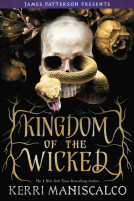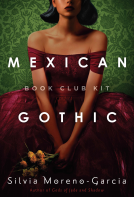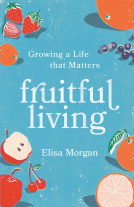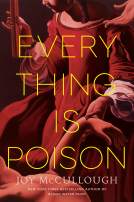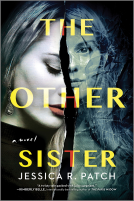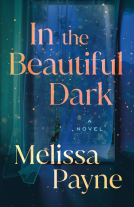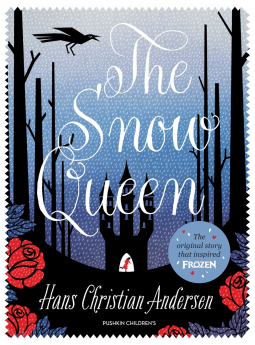
The Snow Queen
by Hans Christian Andersen
This title was previously available on NetGalley and is now archived.
Send NetGalley books directly to your Kindle or Kindle app
1
To read on a Kindle or Kindle app, please add kindle@netgalley.com as an approved email address to receive files in your Amazon account. Click here for step-by-step instructions.
2
Also find your Kindle email address within your Amazon account, and enter it here.
Pub Date Jun 07 2016 | Archive Date Feb 16 2016
Description
Friendless and shoe-less, Gerda must travel through inhospitable lands, with only crows to guide her and bandits for company, in order to find her beloved friend. And when she gets there, how will she melt the ice in his heart?
Nearly two centuries after its first publication, The Snow Queen endures as a tale of love and loss, good and evil, and loyalty in the face of great hardships.
Available Editions
| EDITION | Other Format |
| ISBN | 9781782691037 |
| PRICE | $9.99 (USD) |
Featured Reviews
 Connie B, Reviewer
Connie B, Reviewer
Although I have loved fairy tales my entire life, I never read this book before. I don't have any way of comparing this to any of the other editions out there on the marketplace; however, I thoroughly enjoyed the story and thought it was well written.
One of the things I liked best about the book, is that it is a Christian story. From the beginning when the devil is enamored with his mirror that causes people that look into it to see all good things in a distorted way to the end when Gerda asks for God's protection, it is a story that has many layers of Christianity.
I highly recommend this delightful book for all ages.
I had never read this story before . I was surprised that even though this is children book , I actually enjoyed this.
I do highly recommend
If you’re a fan of the Disney movie, Frozen, you’ll love this story! Frozen is based on this fairy tale.
I first heard the story of The Snow Queen when I was six years old. My mother read it to me during my fairy tale phase. I was an imaginative young girl and I loved fairy tales. Even to this day, there’s something magical about reading fairy tales, and The Snow Queen is one of my favorites.
The Devil is up to no good when he breaks his magical mirror. It shatters into a million pieces and tiny shards of glass pierce people’s eyes and hearts. Suddenly, they see only the negative things in life and their hearts are frozen to love. The Devil laughs and is gleeful at all these humans acting mean and distancing themselves from love and family.
This is what happens to young Kai and before anyone can figure out what happened, he’s kidnapped by the Snow Queen. She sees the frozen heart of his and vows to make him hers.
Gerta is Kai’s best friend and when Kai disappears, she puts on her new red shoes and tries to find him. She asks the flowers, birds and even the big river. No one knew where Kai is. She continues on her journey to find Kai, not knowing if he’s dead or alive. Will they be reunited or will Kai freeze to death under the Snow Queen’s kisses?
I loved this translation and the illustrations were beautiful. Well done, Pushkin Children’s Books!
I highly recommend this book to everyone and it’s a must-read! It makes a beautiful gift, too.
Thank you to Pushkin Children’s Books and Netgalley for a complimentary copy in exchange for my review.
Favorite Quote:
“In the valleys, the roses grow, The Child of God we’ll come to know…”
My Rating: 5+ stars
I must say that I had never read this story before, and it’s not one of the ones that were read to me when I was little but I quite enjoyed it. Like all original fairy tales, it differs quite a lot from Frozen (the Disney movie that was based of this book), which I always find so fascinating. I need to make more time to read original versions of fairy tales.
For the Frozen fans, there aren’t that many similarities, except for the concept of a Snow Queen and the frozen heart bit, that’s important. For the rest, it’s a story on its own, but I imagine many of you have already read or heard it. If not, definitely give it a shot, it doesn’t take up a lot of time.
There’s also some very pretty drawings in this edition, per chapter there’s a full page minimalistic picture and they’re just very nicely done.
 Soudha P, Reviewer
Soudha P, Reviewer
This story was a re=read for me and I enjoyed it as much as I did the first few times I read it. The Snow Queen is a beautiful story originally crafted by fairy tale master Hans Christian Andersen and which is as magical today to modern readers as it once was when it was first published. The narration is poetic and beautiful and the main story is split into chapters, carrying their own share of stories and characters, all of which serve to make this book a very beautiful piece that will be remembered and cherished for a long time. I'd also like to point out that the cover illustration is also very stunning. This is a book I'd recommend to readers of all ages who enjoy beautiful stories.
I have never read the original Snow Queen tale until now. I have seen various television shows and movies that take the premise and tweak the story to fit for them, but the original has never been known to me before now. I absolutely love Hans Christian Andersen and his stories, and I was grateful to get the chance to read it today. This story blew me away. I never realized how deep the words were and how important the lessons learned. Thank you gor giving me the opportunity to read this!
 Donna M, Reviewer
Donna M, Reviewer
I set myself a personal challenge this year to read more classics and The Snow Queen was one of them. Most people have seen the film Frozen, but I wanted to read the story that the film was roughly based upon. I do enjoy the original fairy tales and this one was great - just what I expected and really enjoyable.
 Reviewer 304554
Reviewer 304554
First published in 1844, The Snow Queen has all the components of a classic fairy tale. There have been many retellings, television shows and movies (including Frozen) based on this original tale although some rather loosely.
Despite the title, the story is not centered on The Snow Queen. She is a minor player in this tale. This is the story of Gerda and Kai, two inseparable childhood friends. When Kai gets slivers of the Devil's mirror in his eye and in his heart he begins to change. He can only see the fault and imperfections of others. He soon finds himself in the company and under the spell of the Snow Queen..
Gerda sets out to find him, meeting lots of characters along the way. She encounters many challenges on her journey but always keeps sight of finding Kai. Eventually. Gerda finds him in The Snow Queen's castle. Kai is frozen in all sense of the word but the love and joy of Gerda's tears warm him to his core, his heart, forcing out the glass from the Devil's Mirror. He begins to weep and glass in his eye is flushed away.
I do wish that I could have seen the illustrations that will be in this book.
 Matina N, Librarian
Matina N, Librarian
The Snow Queen is a fairytale that has been one of my favorites since I discovered it years ago. It is the journey of a young girl to find her friend, and save him from not just the Snow Queen, but from the evil magic that has caused his heart to freeze and his eyes to only see the bad in everything.
This is a wonderful translation done by Pushkin Books. The cover is beautiful and I'd love to see the artwork that the finished book will contain. The Snow Queen is a story for fairytale fans as well as fans of Frozen. While the original story is unlike the Disney version in many ways, the two still share the similarity of the quest to save those we love.
 Amanda R, Educator
Amanda R, Educator
Without contention, Hans Christian Anderson is recognized as a crafter of tales that have influenced generations. The Snow Queen is one of my favorites, and you can recognize its thread throughout history from Narnia’s White Witch and traitorous boy, to Alice In Wonderland’s talking flowers, to, for modern audiences, the rescue of an ice cold heart in Disney’s Frozen. This upcoming addition (June, 2016) from Pushkin Children’s Books is paired with striking illustrations by Lucie Arnoux. The high contrast black and white figures, and strong-featured characterizations pair perfectly with the otherworldly, even haunting quality of this tale. Misha Hoekstra translates this from the Danish, and himself lives in Denmark.
Anderson’s tale can be seen as an examination of innocence: what is lost when we dance with evil, and a vision of what each of us needs to regain. He concludes the Snow Queen with a verse from the book of Matthew, “Unless you become like children, you will never enter the kingdom of Heaven.” Anderson makes it obvious that the childhood we desperately need to recover is not a matter of age but a state of the heart; a heart unadulterated by pride, arrogance, conceit, or greed, a heart free from the glittering (and scrumptious in Kay’s case) possessions of the world. The remedy he offers is gospel truth: the one who has lost his innocence has no power to reverse the effect, he requires the sacrifice and love of one who has never fallen.
I love that Anderson makes innocence so attractive. I also love his depiction of evil, that it is not a matter of having more wickedness or less wickedness—even the smallest mite of evil glass flips good to bad, beautiful to ugly.
“The mirror took anything that was good or lovely and shrank it to almost nothing. But if something was useless or bad, the mirror magnified it and made it look even worse. The most farming landscape looked like boiled spinach in the mirror, while the nicest people turned nasty or stood on their heads with their middles missing, and their faces so twisted that nobody knew who they were.”
Anderson moves me to both revolt against and sympathize with our evil state, poor lost souls that cannot even see good things when they are right in front of us. And yet, this is just one theme that the Snow Queen addresses. Remembering and forgetting, vision, sacrifice, friendship, the nature of beauty, redemption—it is all here for the reaping.
 Gail B, Reviewer
Gail B, Reviewer
Daughters loved this book such a classic. Never fails. My daughters where enchanted.
 Reviewer 308799
Reviewer 308799
This classic fairy tale had one element I loved, it has a strong and brave heroine in Gerda. Her name meant guardian. It's a fitting name for the heroine of this story. She refused to believe that Kai, her friend, was died when he didn't return home, and went out into the "wide world" to find him. With this decision she declared herself Kai's guardian. I liked that Gerda's adventure was split into seven stories, each one I think symbolic to her growing up.
The story started out slow but the story picked up when Gerda met the crow and he took her to the princess's palace.
 Daisy V, Reviewer
Daisy V, Reviewer
I had heard about The Snow Queen and had not read it until now. I was surprised that the main character of the book is not the Snow Queen but a girl named Gerda and her quest to find her friend Kai. I had no idea that this was a children’s book, I absolutely loved it. The main thing that made me love this book is that it is Christian based. It begins with the Devil and his mirror and as the story unfolds at the end Gerda is seeking God to protect her. One of my favorite lines would have to be. “I can’t give the girl more power than she already has! Can’t you see how powerful she is?” Gerda is a powerful girl, she manages to go off on her own to look for Kai and along the way she makes new friends that help her out. I would definitely recommend this book to people of all ages. I know I will be reading this story to my nephew.
I love the pen and ink drawings that were included to show the illustrations found inside this edition. Simple and detailed at the same time, and capturing the story beautifully alongside the text itself.
The translation divides the story into several smaller, related tales that sort of act as chapter dividers, and it flows nicely. Difficult to even tell it *is* a translation and that's the whole point of translating no matter what languages you're going between. You want to end up with something that sounds as natural as if it were originally written in the translated language. There are a couple little things, but they could be easily written off as that's just how the character speaks.
I like the message behind it as well with Gerda being strong enough as she is -- "I can't give the girl more power than she already has! Can't you see how powerful she is? Can't you see how people and animals all serve her? And how far she's got in the world on just her own two feet?"
She doesn't need a pile of magical items or special powers. She's just a good person on a quest to save her best friend.
 Ellen K, Librarian
Ellen K, Librarian
At the age of ten I discovered the world of fantasy and read every fairy tale book I could get my hands on, including all the Lang colors. I have to admit the more gruesome stories were the most appealing. For some reason, one of my favorite tale tellers was Hans Christian Andersen and one of his best creations was The Snow Queen. My first introduction to this story was the 1957 cartoon produced in Russia which was relatively faithful to the original fairytale (unlike the supposed animated retelling of Disney's Frozen which falls too far from the mark to be compared to Andersen's original). After I read the story for myself, the symbolism of the evil mirror (also featured in Snow White) and the superstition of seven years bad luck if one is broken, led me to avoid the mirror hanging on the hallway wall and was horrified the day it fell and shattered. I was a little afraid that the Snow Queen would find me through the magic of the splintered shards. Such is the imagination of a child, stirred by an exposure to the faerie realm. Pushkin Press is counting on a youngsters fascination with the macabre as it searches out stories from around the world to be translated and shared with the upcoming generation of readers. They have a hit with Misha Hoekstra's translation of The Snow Queen. Born in Denmark, like Andersen, he has captured the essence of the original examining the concepts of good vs evil, love and loyalty in the face of adversity, and trust vs deception.
Our main characters are Gerda and Kai, two playmates who live in apartments facing one another with a garden terrace between where they spend pleasant days together. Yet in the real world evil creeps into their lives when Kai gets a devil inspired piece of glass imbedded in his eye and heart which colors his view of the world and separates him from his partner. While sledding with the other boys he is kidnapped by the Snow Queen who uses her powers to freeze him out of his former life and steals him away with her to her winter palace where he spends his time making creations of ice. Everyone fears him dead but Gerda who sets out on foot in order to find her beloved companion. She meets with those - human, plant, and animal - who assist her in finding the right path towards her dear childhood friend. Here is a young girl whose brave quest provides a true inspiration for the female audience.
The story is divided into seven sections, each describing a different leg of the journey. Amongst the kindness are cruel intents containing the threat of violence and death. There is no guarantee that there will be a happy ending with so many road traps keeping the two youngsters apart. In fact, the odyssey takes so long, that they are no longer children when they return home, although they remain young at heart. While the devil is behind Kai's transformation, it is the angels whom Gerda calls upon through prayer who save the day. This fairy tale, originally written in 1844, contains not only moral lessons, but several bible verses, while the language of the 1800's might be considered a little bizarre by modern readers used to a more politically correct text.
Lucie Arnoux, a talented illustrator born in France, but working out of London, has provided a visual representation of the story through her intricate black and white drawings. While I appreciate her talents, I would have preferred a more fanciful, brightly colored portrayal of the main characters. Four stars for this new interpretation of an old classic.
Thank you to Pushkin Children’s Books and Netgalley for a complimentary copy of the ARC in exchange for an honest review.
 Aparajita B, Reviewer
Aparajita B, Reviewer
It has been years since I read The Snow Queen, so I was pretty glad for this re-reading experience. This is one of Hans Christian Andersen;s most famous fairytales and also one of the longest and the most complex one too. Frankly, this was really not my favorite but I enjoyed it nonetheless. And this one has got some pretty great artwork preceding each of the chapters.
This is the story of Kai and Gerda (don't know if its a mistake but the synopsis says his name is Kay), best friends really. This is the story of sacrificial love and themes of growing up but still remaining children at heart. This is the story of Kai whose heart got pierced by the demon's mirror and got kidnapped in turn by the icy Snow Queen, forgetting everyone and everything .... even Gerda. This is the story of Gerda who would go to the ends of the Earth to rescue her best friend. And this is the story of Gerda growing up through said quest.
With vivid imagery, Christian themes and myths and lore combined, The Snow Queen is a complex and rich tale to be sure. Enjoyed by all of the young and the old. I just think that of the book had annotations and discussion questions and answers at the end alongside all the beautiful artwork then maybe this book would have been a compound experience.
"A marvelous edition and a marvelous fairytale"
Loved the story! Loved the characters! Liked the story flow. Great classic to read. Given copy for honest review.
 P Susan W, Reviewer
P Susan W, Reviewer
The Snow Queen by Hans Christian Andersen published by Pushkin Children's Books is an excellent book. The black and white drawing add to the harsh reality of the story. The beginning with the birth and destruction of the mirror is rather bleak making it a story for older elementary children on up.
The theme of loyalty, friendship and good triumphing over evil makes it timeless and ageless. As an educator I believe this edition would spark some lively discussions with and among readers. I would truly love to hear my fourth and fifth grade students’ thoughts on the mirror symbolism, the friendship between Kai and Gerda and the resolution at the conclusion. I have no doubt that they would have also ideas about the kind of illustrations provided in the edition. I can give a high recommendation that this is a book children would enjoy while being thought provoking.
The publisher through Net Galley provided a copy.
 Althea M, Book Trade Professional
Althea M, Book Trade Professional
This was one of my favorite stories as a very young child.
I hadn't re-read the short tale in many many years. My thoughts upon rereading:
Well, it's more sentimental than I remembered, and the tone, especially at the beginning, is almost verging on patronizing in the way it addresses the (presumably young) reader/listener. As a child, I don't think I picked up on that at all. It's also more overtly Christian/religious than I remembered. (I've noticed that about a good number of the 19th-century children's tales that I've re-read, George MacDonald for example, and Howard Pyle.) I think as a kid I just tuned that stuff out, but took it for granted.
The imagery: still so beautiful! The shards of glass, the snowflakes, the roses... This is why the story has endured so long. It is simply gorgeous.
As a child, I perceived Andersen's Snow Queen as the same character as Jadis, the White Witch, in CS Lewis' 'The Lion, The Witch and the Wardrobe.' As an adult, well, yeah, it is definitely the same character. Lewis took her, whole cloth, and her sleigh too....
Vivid memory - this story was the first time I'd ever heard of "Lapland," and it seemed like such a fantastic land. Interesting to realize that this portrayal of northern Finland was probably much more 'realistic' & contemporary (if remote) to children reading the story when it was first published, and people there still did depend on reindeer and travel by sleigh...
The robber girl!!!! How on earth did I ever forget about her! Her practical and self-interested, but not quite 'bad' character is simply amazing.
I've seen modern criticism of 'The Snow Queen' accusing it of being an apologist tale for domestic abuse, encouraging women to pursue relationships with men who mistreat them. It is possible to read the Snow Queen as the homewrecker, and Gerda as the good wife who must faithfully pursue her errant husband, represented by Kay, but I don't think Andersen intended that, or that the story actually is that. I think it's more likely that Andersen intended another possible reading: that of a Christian allegory, where both Gerda and Kay are, at times, led astray and forget what is right (Kay due to the shard of glass; Gerda due to the witch's enchantment), but eventually find their way back to the Faith & redemption and live in innocence and purity. However, I personally like the simplest and most direct reading: that the story is what it says it is, a narrative of bravery and friendship. That the enchantment on Kay is real, and not his fault, and that Gerda's dedication to her quest, and her achievement, is admirable.
I think that one of Andersen's main intentions here is, clearly, to show women as brave, capable, and self-sufficient. Throughout the story, they keep appearing: First, of course, there's Gerda and her quest to rescue her friend. But there's also the childrens' grandmothers, who are more vivid characters than the childrens' parents; the witch, who keeps her cottage all on her own; the princess, who had no intention of marrying until she met a man who appreciated her intellect; the knife-wielding bandit girl, whose mother seems to be the leader of the robbers; & the Lapp woman, who gives Gerda help & directions on her quest, to meet a Finnish wise woman. Of course, the Snow Queen herself wields her power alone...
The biggest takeaway I believe I had from this story, though, is from the very beginning. The imp's twisted mirror which shows everything as ugly and rotten, and its shard of glass that, in someone's eye does the same, took hold for me in the idea that the world is the world, but that how we look at it can be an option. We can focus on the mean and the corrupt in all things - or we can look for the beauty and the redeeming qualities of the world. It is up to us. (We don't have to see everything as boiled spinach.) ;-)
Many thanks to NetGalley and Pushkin for the opportunity to revisit this tale. As always, my opinions are solely my own.
Of course, differences in editions of a classic tale like this largely come down to the illustrations. So far, it looks like Amazon Japan has a couple of previews of the images from this edition, while other site don't: https://www.amazon.co.jp/Snow-Queen-Hans-Christian-Andersen/dp/1782691030/376-6866251-4593213
 Wayne M, Reviewer
Wayne M, Reviewer
'The Snow Queen' by Hans Christian Anderson, translated by Misha Hoekstra, with art by Lucie Arnoux is similar to another translation I very recently reviewed, but while that one was more of an art piece, this is the one I'd want to read to a child.
The book is comprised of seven short chapters or stories. They are all linked, so I prefer chapters. The Devil has made a special mirror. It breaks and scatters aroudn the world. If the shards get in you, you don't see beautiful things, you see dark things. Little Kai and Gerda are very good friends and nothing can separate them until Kai gets a splinter of mirror in his eye. From then on, he isn't a very nice boy and sees ugliness in the world around him. He is taken away by the Snow Queen, and Gerda goes looking for him. She has adventures talking to crows and with a bandit girl. Will she ever find Kai and can they be reunited?
Each chapter has one pen and ink illustration. They are good illustrations. The story is a really readable translation. It reads like a good fairytale and this was missing in the other version I recently read. Translation can make all the difference. It may be that the other translation is more authentic, but, for me, this is more readable.
I received a review copy of this ebook from Pushkin Children's Books and NetGalley in exchange for an honest review. Thank you for allowing me to review this ebook.
Readers who liked this book also liked:
Silvia Moreno-Garcia
Historical Fiction, Literary Fiction, Sci Fi & Fantasy


